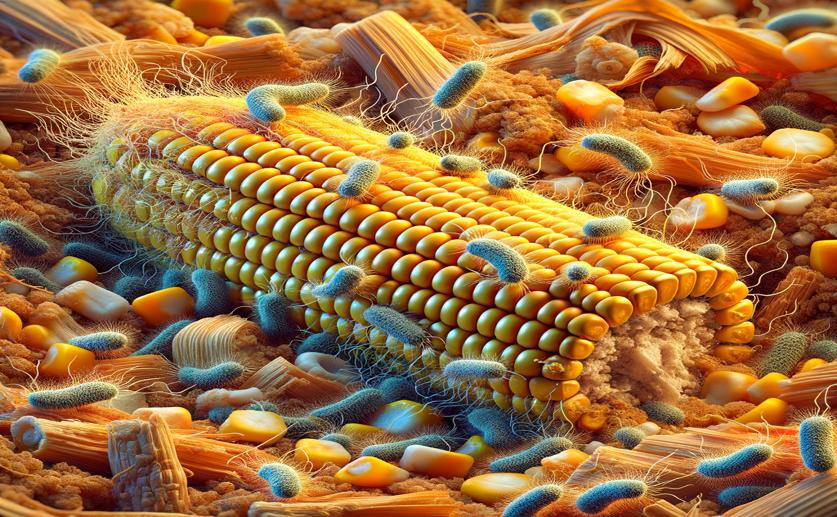
Unlocking How Corn Waste Helps Microbes Produce Fats and Process Sugar
Jenn Hoskins
21st July, 2024

Image Source: Natural Science News, 2024
Key Findings
- Researchers at RWTH Aachen University studied the fungus Ustilago maydis for sustainable oil production using agricultural waste
- Ustilago maydis can metabolize various sugars from corn stover, including glucose, fructose, sucrose, xylose, arabinose, and galactose
- The study found methods to reduce the lag phase in galactose metabolism, enhancing the fungus's efficiency in producing microbial triglycerides
References
Main Study
1) Studying microbial triglyceride production from corn stover saccharides unveils insights into the galactose metabolism of Ustilago maydis.
Published 20th July, 2024
https://doi.org/10.1186/s12934-024-02483-1
Related Studies
2) An Overview of Potential Oleaginous Microorganisms and Their Role in Biodiesel and Omega-3 Fatty Acid-Based Industries.
3) Perspectives for the application of Ustilaginaceae as biotech cell factories.
4) Lipid droplets accumulation and other biochemical changes induced in the fungal pathogen Ustilago maydis under nitrogen-starvation.



 31st March, 2024 | Greg Howard
31st March, 2024 | Greg Howard